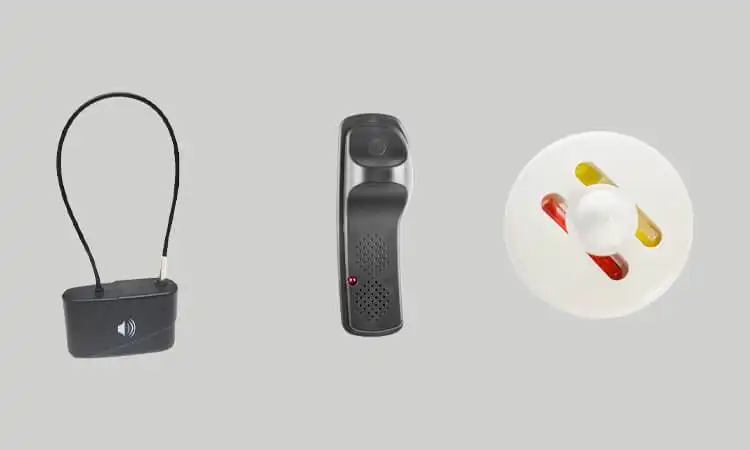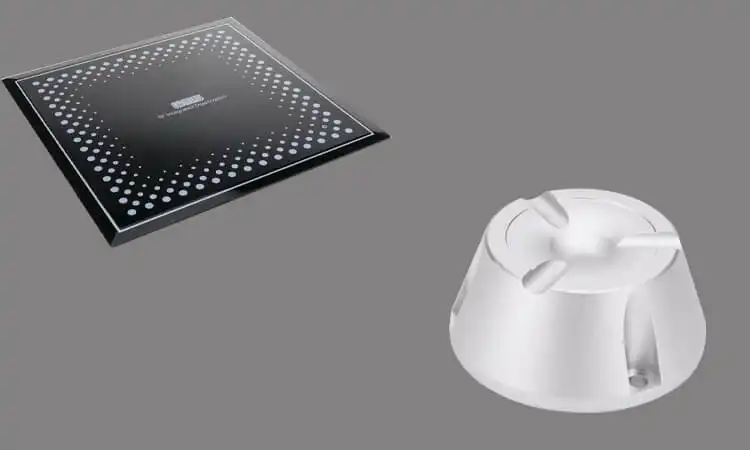Retail store theft is a serious problem that affects businesses of all sizes. The National Retail Federation estimates that U.S. retailers lose billions of dollars each year to theft and shoplifting. Electronic article surveillance (EAS) systems are one of the most effective ways to combat theft. They help protect the merchandise in retail stores. This blog will cover the basics of EAS systems. We’ll discuss how they work and the different types available. We’ll also explore their benefits for retailers and implementation considerations. Lastly, we’ll address common issues that can arise with EAS systems. By understanding the fundamentals of EAS systems, retailers can take proactive steps to safeguard their inventory and profitability.
What is Electronic Article Surveillance (EAS)?
Electronic Article Surveillance (EAS) systems are an effective tool for retailers. They help prevent theft and protect their merchandise. EAS systems work by attaching small electronic tags or labels to merchandise. The antennas can detect the store’s entrance and exit points. When a tagged item passes through the detection zone, the antenna detects it. The antenna then sends a signal to an alarm system. The alarm system receives the signal and sounds an alert. The alert notifies store personnel that the merchandise is being removed from the store without authorization.

EAS systems typically consist of two main components: EAS antennas and EAS tags or labels. EAS antennas, also known as pedestals, are typically installed at store entrances to detect EAS tags and labels. EAS tags and labels are attached to merchandise to be protected. They are designed to trigger the EAS system’s alarm. This happens when passing through the detection zone. EAS antennas emit and receive signals at a specific frequency, usually within a range of six to eight feet. When an EAS tag or label passes through the antennas, it disrupts the signal and triggers an alarm. Cashiers remove or deactivate EAS tags and labels at the point of sale to prevent false alarms. EAS systems are an effective tool for retailers to deter theft and protect their merchandise from loss.
Electronic Article Surveillance (EAS) Systems Basic Types
There are different types of EAS systems available. These include AM (acoustic-magnetic) and RF (radio frequency) systems. They work by detecting electronic tags or labels attached to the merchandise. For example, AM (acoustic-magnetic) systems operate at a frequency of 58 kHz, while RF (radio frequency) systems operate at a frequency of 8.2 MHz. Although they may look similar, they have distinct characteristics that matter to retailers.

When it comes to Electronic Article Surveillance (EAS) systems, it’s important to know that EAS tags are designed to work with a specific type of system. For example, AM systems can only detect AM tags, while RF systems can only detect RF tags. Electronic Article Surveillance (EAS) tags and labels don’t have to be from the same manufacturer in order to work together. Instead, what matters is that they operate on the same frequency – either AM or RF. This means you can mix and match tags and labels from different manufacturers as long as they are compatible with your EAS system’s frequency. This information is crucial for retailers to use the right tags and labels with their EAS systems to maximize their effectiveness.
Retail chains typically use either AM or RF technology in all their stores, but not both. This simplifies operations and avoids any confusion or mix-ups with tags. By standardizing their EAS systems across all stores, retailers can ensure that they use the right tags and labels with the right systems. This helps to prevent theft and reduce losses due to shrinkage. Standardization also simplifies the process of managing and maintaining the EAS systems.

Acousto-Magnetic (AM) Systems
Acousto-magnetic (AM) systems are a popular choice for many retailers, particularly apparel stores because they are easy to install and use. AM systems are also resistant to radio or magnetic interference, which makes them reliable in various environments. Many types of EAS tags are available that work with AM systems and can be used to protect a wide variety of merchandise.
However, one limitation of AM systems is that they don’t support paper-thin labels. AM labels are a bit thicker and less flexible. This makes them unsuitable for certain types of merchandise. For example, food packaging or items that require a simple label may not be suitable for AM labels. Despite this drawback, AM systems remain a popular and effective choice for many retailers. They are looking to improve store security and reduce losses due to theft.
Radio Frequency (RF) Systems
Radiofrequency (RF) systems are another popular electronic article surveillance (EAS) choice in retail stores. Compared to acoustic-magnetic (AM) systems, RF systems are more sensitive. They require expert installation to ensure they are properly set up. If not properly tuned, RF systems can be susceptible to false alarms. However, a well-built and well-tuned RF system can be just as effective as an AM system at detecting and deterring theft.
One of the biggest advantages of RF systems is that they work with very thin EAS labels. This makes them a great choice for retailers that sell small or delicate items. Examples of these types of stores include grocery stores, cosmetics stores, and drugstores. Plastic EAS tags can be too bulky for these items. However, RF labels are thin and flexible. This makes them less noticeable and more convenient for customers. RF systems can provide reliable and effective protection with proper installation and tuning. They can do this for a wide range of merchandise in various retail environments. Retailers can use RF systems to prevent theft and reduce losses due to shrinkage.
In addition to acoustic-magnetic (AM) and radio frequency (RF) systems, there is a third type of electronic article surveillance (EAS) system called radio frequency identification (RFID). While technically not an EAS system, RFID is sometimes used for store security purposes. The primary purpose of RFID is to identify a specific product that passes by the antennas. Unlike AM and RF systems, which only detect that an EAS tag or label has passed through, RFID systems can identify the specific product attached to the tag or label. For example, an RFID tag or label can carry information about the product’s brand, color, size, and other identifying details. This information can help retailers track inventory, prevent theft, and improve their operations. We will cover RFID systems in more detail in this article: The Most Comprehensive Cost of RFID System Analysis
Electronic Article Surveillance tags and labels are critical components of EAS systems that help retailers prevent theft and protect their merchandise. EAS tags are small plastic devices attached to the merchandise, while EAS labels are paper stickers or thin plastic strips with an EAS circuit hidden inside. Both tags and labels come in different shapes and sizes, depending on the merchandise they are designed to protect.

The picture on the left shows some of the most common types of EAS tags. However, it’s often difficult to tell whether a tag is an acoustic-magnetic (AM) or radio frequency (RF) tag by appearance alone, as they can look similar. However, EAS tags and labels can vary in features. Some tags are simple and only trigger the store alarm when passing through the EAS antennas at the door. Other tags are self-alarming and can detect tampering or improper removal attempts, sounding their own alarm powered by an internal battery. Self-alarming tags are typically used for higher-priced or particularly theft-prone items.
In contrast, AM labels generally take the form of thin, plasticky strips commonly seen on electronic boxes. On the other hand, RF labels can come in various sizes, shapes, and colors and resemble ordinary stickers. Sometimes, the price sticker itself may contain a hidden RF circuit that is undetectable to the customer. By understanding the different types of EAS tags and labels available, retailers can choose the right ones for their merchandise and effectively protect against theft and shrinkage.
Common Issues with EAS Systems
Retailers widely use Electronic Article Surveillance (EAS) systems to prevent theft and protect their merchandise. However, retailers may encounter some common issues when using EAS systems. Here are some of the most prevalent ones:
False Alarms
False alarms can be a major issue with EAS systems. Various factors, including improper installation, incorrect calibration, and environmental factors, can cause them. False alarms can damage the store’s reputation and disrupt the shopping experience for customers.
Tag and Label Compatibility
Not all EAS tags and labels are compatible with all EAS systems. Retailers should check with the manufacturer to ensure they use the right type of tags and labels for their specific system. Using incompatible tags and labels can reduce detection rates, false alarms, or even damage to the EAS system.
Tag and Label Placement
The placement of EAS tags and labels is critical for optimal detection and performance. Improper placement can result in reduced detection rates, false alarms, or even damage to the merchandise. Retailers should follow the manufacturer’s tag and label placement guidelines to ensure optimal protection.
When customers purchase items protected by plastic EAS tags, the tags are typically removed by cashiers using a detacher at the register. These tags can be reused many times and may last for years until they are damaged. Self-alarming tags with internal batteries usually have a 2-3 years lifespan, while simpler, non-alarming tags can last even longer.

In contrast, EAS labels are not removed but deactivated after purchase. Cashiers typically use a deactivator pad at the register to deactivate the label. The EAS label is rendered ineffective by waving the item over the pad. The deactivator pad is sometimes integrated with the price scanner, allowing cashiers to scan the price and deactivate the EAS label in a single motion.
One Technology with Multiple Uses
Electronic Article Surveillance technology is a versatile tool for retailers looking to enhance their store security and prevent theft. EAS systems, tags, and labels come in various forms and can be used for different purposes. EAS systems come in different styles and can be installed in various locations throughout a store. While the most common style is the pedestal-style system, some EAS systems are designed to be hidden on the floor near the store entrance, installed on the ceiling, or integrated into the door frame.
EAS tags also come in many form factors. There are simple pin tags and lanyard tags that can be used for apparel and accessories, and specialized tags for items like golf clubs, liquor bottles, and eyewear. EAS technology continues to evolve, with new form factors appearing and existing ones getting improved. In addition to preventing theft and reducing losses due to shrinkage, some EAS systems now offer retailers an extra benefit: the ability to count people entering and exiting the store. This technology allows retailers to gain valuable insights into traffic patterns and customer behavior. If you’re interested in this feature, be sure to look for EAS systems that offer people-counting capabilities.

As shoplifters develop new strategies, EAS tags also evolve to become more tamper-resistant, easier to detect, and even capable of surprising shoplifters. For example, some tags have hidden ink that spills and ruins the garment if forcibly removed. With constant innovation, EAS technology has proven to be a reliable and resilient tool for retailers to control theft and reduce losses due to shrinkage.
In conclusion, EAS technology is not new, but it continues to play a critical role in the world of loss prevention. With never-ending innovations and improvements, retailers can be confident that EAS technology will remain an important tool in their arsenal for many years to come.
Related Articles: RFID vs EAS: What’s the Difference?









